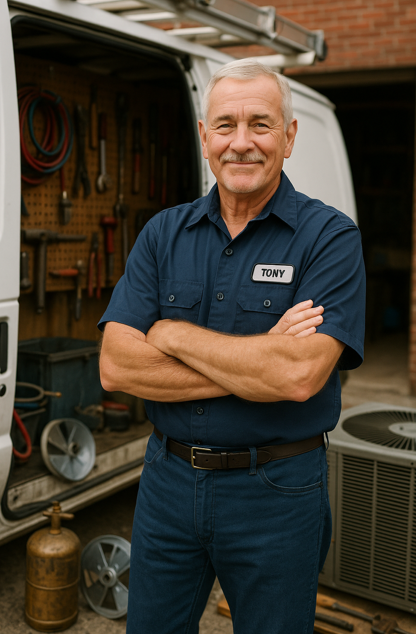Let’s cut the fluff: if your 4 ton AC compressor just gave out, you’re staring down a pretty serious decision. And I’ve been in enough garages, basements, and crawlspaces to tell you—most folks don’t know what they're dealing with until the cool air stops.
In this post, I’m going to walk you through what matters when you're talking about a 4 ton AC unit compressor. I’ll break down:
-
How these compressors work
-
Whether repair or replacement makes sense
-
What makes a compressor fail
-
The role of refrigerants like R-32
-
Why a full 4 ton air conditioner compressor system swap might be smarter
By the end, you’ll know how to avoid the biggest money pits—and where to look for real value.
What Is a 4 Ton AC Compressor?
A 4 ton compressor is the beating heart of your cooling system. It pressurizes refrigerant and pushes it through your coils to absorb heat from inside your home and release it outdoors. When it works, your house feels like a breeze. When it doesn’t, you might as well be living in a toaster.
Now, “4 tons” doesn’t mean the compressor weighs that much. It refers to its cooling capacity—about 48,000 BTUs per hour. That’s what you typically need to cool a house around 2,000–2,500 square feet.
Compressor Failures Aren’t Always What They Seem
You hear stories:
“Compressor’s shot.”
“Time for a whole new system.”
“Gonna cost you thousands.”
Before you panic—or pay—make sure you’ve got a proper diagnosis. Common causes of 4 ton AC unit compressor issues include:
-
Low refrigerant: Usually from a leak. This strains the system.
-
Electrical issues: Burned contacts or bad capacitors can mimic failure.
-
Contamination: Moisture, acids, or debris inside the system wreck internals.
-
Overheating: Often due to clogged coils or poor airflow.
Pro tip: A second opinion can save you thousands. Many so-called “dead compressors” just need a hard start kit or new capacitor.
But if it’s truly gone, you’ve got options.
Repair vs. Replace: What Makes Sense?
Here’s my rule of thumb:
-
If your unit’s less than 10 years old, and you’ve got a solid warranty—try a repair.
-
If it’s older, or uses phased-out refrigerants like R-410A, a replacement might be smarter long-term.
Don’t forget that compressor swaps aren’t always cheap. You’re talking $1,500–$2,800 just for the compressor 4 ton model alone. Add labor, refrigerant recovery, and recharging, and it can hit $3,500+. And you’re still stuck with an older system.
This is why I recommend looking into energy-efficient replacements—especially with the new SEER2 standards in effect. A modern 4 ton air conditioner compressor system using R-32 can save you big on your utility bills.
Why R-32 Makes a Difference
If you're replacing the compressor—or the whole system—don’t stick with outdated refrigerants. R-32 is now the better alternative to R-410A, offering:
-
Lower global warming potential
-
Better energy efficiency
-
Improved heat transfer
-
Smaller refrigerant charge requirements
According to Daikin’s refrigerant research, R-32 systems can be up to 10% more efficient than their R-410A counterparts.
If you're shelling out for a new unit, make it future-ready.
When It’s Time for a Full System Upgrade
I get it. Replacing the whole system sounds pricey. But if you’re putting thousands into a dying unit, you may be better off with a full system like the Goodman 3 Ton 14.5 SEER2 R-32 Bundle.
Yes, I know it’s not a 4-ton system—but if your home’s square footage and insulation support it, a 3-ton 2-stage R-32 unit like this one can handle the load while delivering higher efficiency, quieter operation, and better dehumidification.
Need a 4-ton? Goodman, Bryant, and Carrier all offer reliable R-32 4-ton options, and newer inverter-driven systems like the Mitsubishi Hyper-Heating series give you even more control and comfort.
Look for These Features in a 4 Ton Replacement
If you do go the full replacement route, look for:
-
Two-stage or variable-speed compressors
-
R-32 refrigerant compatibility
-
ETL or AHRI certification
-
High SEER2 (14.5 or higher)
-
Scroll compressors, which are more reliable than reciprocating
For a solid rundown of compressor types, check out HVAC Seer’s guide to compressor designs.
What About Inverter Compressors?
If you really want to level up your system, consider a 4 ton inverter compressor. These aren’t just marketing gimmicks—they truly adjust speed based on demand, which can lead to serious energy savings.
As Energy.gov explains, inverter compressors reduce energy use by running continuously at partial load instead of cycling on and off.
They cost more upfront—but often pay for themselves in under 5 years, especially if you're cooling large spaces in hot climates.
Final Advice from a Guy Who’s Seen It All
If your 4 ton air conditioner compressor is on its last legs, don’t just fix what’s broken—take a hard look at the whole system.
Ask yourself:
-
How old is my system?
-
Is my refrigerant outdated?
-
Is this a one-time repair or the start of a breakdown parade?
-
Am I missing out on newer, more efficient technology?
And whatever you do—don’t let a smooth-talking tech sell you a cheap band-aid fix without looking at the big picture.
Take it from me: sometimes a full upgrade is the smarter move. Especially with R-32 systems leading the way into a cleaner, more efficient future.
If you're not sure where to start, check out what's available online or give a reputable dealer a call. Better yet, do your research and invest wisely—because no one likes sweating through a summer waiting on a compressor delivery.
Stay cool. Stay smart. And if you’re replacing a 4 ton AC compressor—make sure it’s the last time you’ll have to.
— Tony Marino







